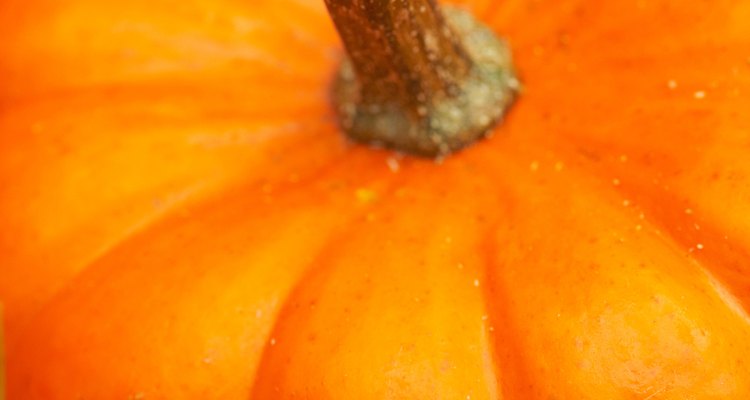
Carving jack-o'-lanterns is a fun Halloween activity, but sometimes the practice can seem like a waste of perfectly good food. With Thanksgiving pumpkin pies coming just around the corner, that smiling Halloween pumpkin might seem like just the ticket to get some holiday baking done early. Many factors determine whether your Halloween pumpkin is safe to eat, so if you aren't positive it meets the safety criteria, then toss it out.
Safe Storage Temperatures
Pumpkins can last unrefrigerated for weeks until they're cut open. After you cut them, however, you expose the flesh to bacteria. For safe storage, cut pumpkins must be stored below 40 degrees Fahrenheit, so unless you're in an area with a particularly chilly October, eating your Halloween pumpkin just isn't a safe idea. Even if the temperature is 40 degrees or lower, heat from your house or the candle inside the pumpkin can raise the temperature just enough to cause problems. If you really want to cook your pumpkin after Halloween, carve it the day of Halloween and store it in the fridge until temperatures drop below 35 degrees. Put it outside with an electric candle and keep a thermometer nearby that you check regularly. While cooking can kill some of the bacteria that may build up in the pumpkin, you don't want to risk your family's health. Bring it back inside and place it back in the refrigerator before you go to bed Halloween night.
Other Safety Considerations
Placing your pumpkin outdoors may keep the temperature down, but it also exposes your jack-o'-lantern to bugs and other creepy-crawlies that just might be thanking you for the treat. These may not be hazardous to your health, but most people don't want those extra hitchhikers baked into the pie. If you choose to bake with your Halloween pumpkin, inspect it carefully for visitors and scrape off the exposed layer of flesh before cutting it into pieces. Cook the pumpkin within 24 hours of carving it to maintain freshness.
Alternatives
Rather than running any health risks, consider painting your pumpkins with non-toxic paints instead of carving them next Halloween. This lets you keep the pumpkin's protective skin intact as it sits on your stoop for trick-or-treaters. Check the pumpkin for mold before cooking with it, as even uncut pumpkins will begin to rot eventually, especially in damp climates. Unless you pick your own pumpkin, there's no way of telling how long ago it was cut from the stem, so you can't tell how old it is. You can also glue items to your pumpkin to decorate it, using non-toxic glue. In either case, cut the skin off before baking to remove the decorations safely.
Food for Thought
Halloween pumpkins may not be the best choice for your holiday baking, as they are grown for size and firmness rather than flavor. You're better off getting a Halloween pumpkin for carving and a baking pumpkin for cooking, even if it seems wasteful. It's only once a year, and you can always compost your jack-o'-lantern, either in your own compost pile or at a community compost center, available in many cities. Getting two pumpkins keeps your family safe, health-wise, and lets you bake a great-tasting pumpkin pie. Feel free to bake with the carving pumpkin's seeds, however, as long as you rinse and bake them immediately after removing them from the pumpkin.
Related Articles

How to Dry Pumpkins

How to Cook Pumpkin Guts

How Long Does Pumpkin Stay Good?
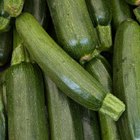
How to Clean Zucchini

Can You Use an Eggplant if It Has ...

Are Bananas Safe to Eat if the Skin Is ...

Does Bird Seed go Bad?

How to Prevent Bananas From Browning ...
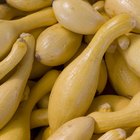
How to Clean Butternut Squash
How to Freeze Papaya

Do I Have to Refrigerate Apple Dump ...
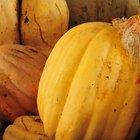
How to Store & Keep Zucchini and Squash ...

What Happens if You Cook Chicken With ...
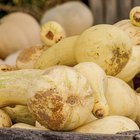
How to Cook a Neck Pumpkin

The Best Way to Cook Pumpkin

How to Eat a Kiwano Horned Melon
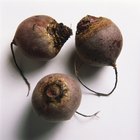
How to Remove Skin From Beets

How to: Eucalyptus Oil as a Flea ...
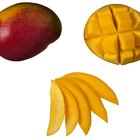
Does Mango Have a Core?
What to Write in Christmas Cards
References
Writer Bio
Anne Hirsh has been writing and editing for over 10 years. She has hands-on experience in cooking, visual arts and theater as well as writing experience covering wellness and animal-related topics. She also has extensive research experience in marketing, small business, Web development and SEO. Hirsh has a bachelor's degree in technical theater and English and post-baccalaureate training in writing and computer software.
Photo Credits
Jupiterimages/Photos.com/Getty Images